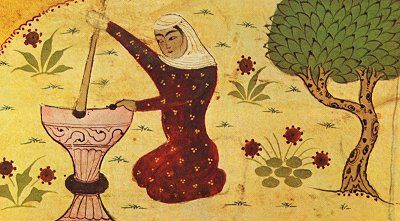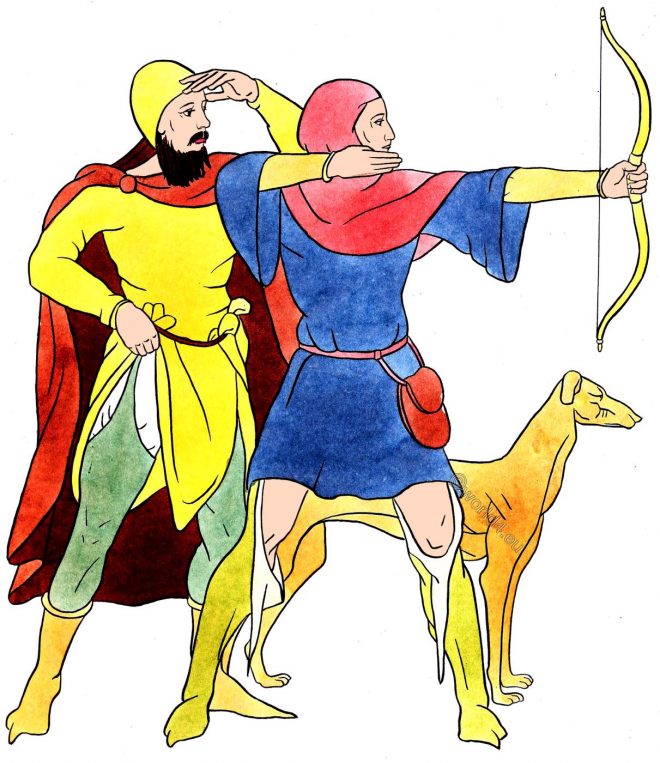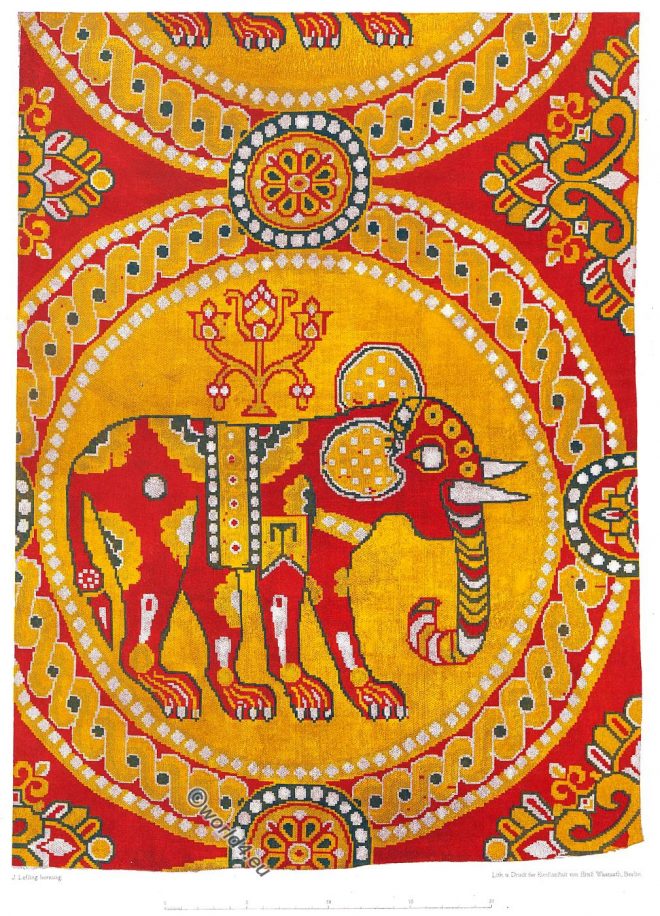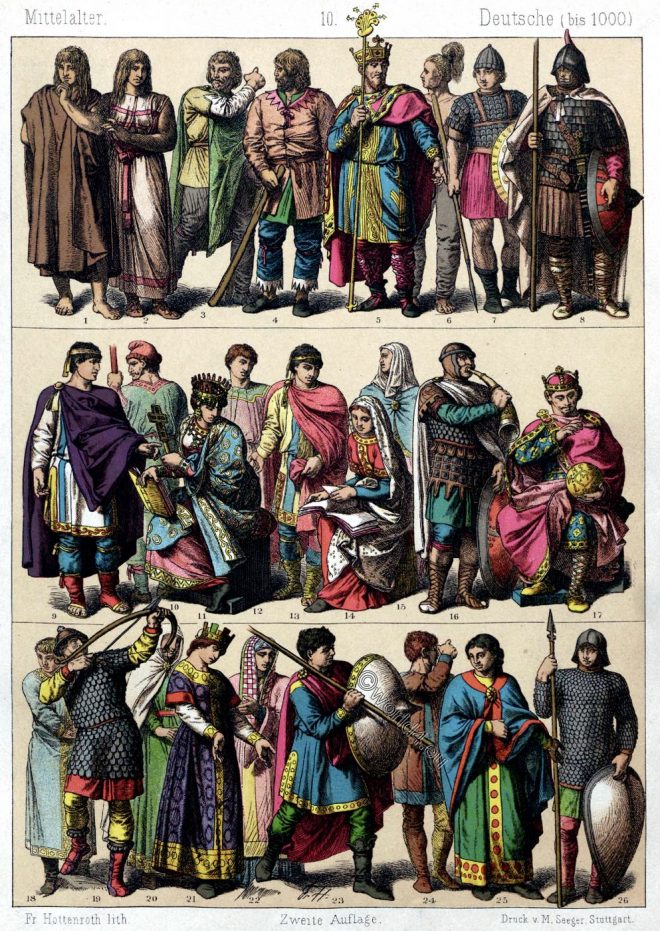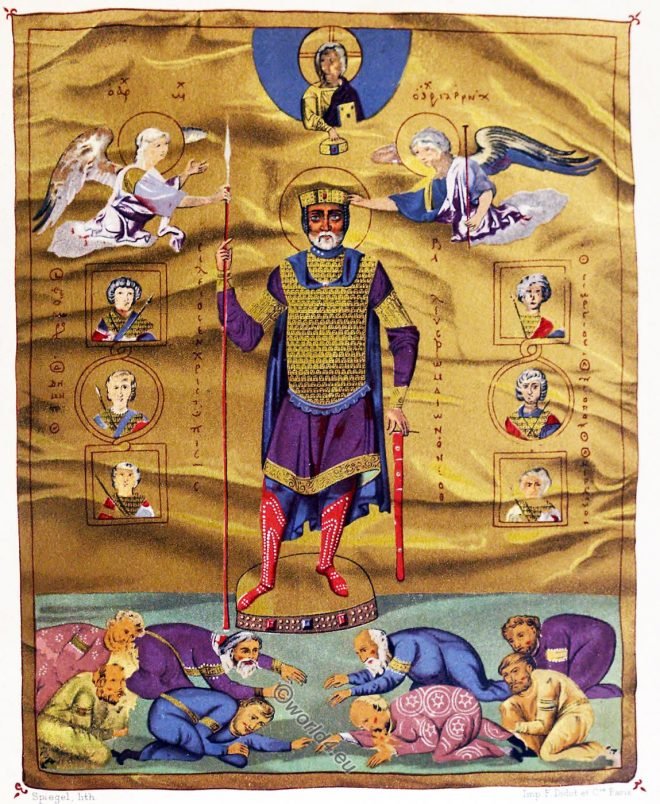Treasury of the Cathedral at Nancy. This chalice and paten are of gold, enriched with precious stones and small cloisonné enamels
Category: 10th Century
Costume and Fashion History of the 10th century. Culture of the High Middle Ages. Age of the Carolingians, Byzantium, Capetians.
Women Mystics of the Dervish Orders. Female muslim Sufi saints.
Women Mystics by Lucy Mary Jane Garnett. Sisterhood of Mystics. Female muslim Sufi saints. The holy women of the Dervish Orders.
Costumes of the Byzantine Middle Class. 400 A.D. – 1100 A.D.
Byzantine costume was the dress of the world after the fall of Rome.
England. Lower Class costumes of the Middle Ages.
Costumes 1000 to 1300 A.D. The two men in this picture might very well be, from the manner in which they are dressed, members of Robin Hood’s band.
Byzantine silk fabric with elephants from the 8th to 10th century.
Silk fabric. Background red pattern opposite. Large circles with elephants. The pattern is a Byzantine redesign of an originally Sassanid pattern.
Byzantium. Costumes of the Eastern Roman emperor and empress.
History of Costume. Byzantium. 400 – 1100 AD. Costumes of the Eastern Roman emperor and empress.
German clothing up to the 10th c.. Goths, Lombards, Merovingians.
German people in the dress at the end of the 10th century. Lombard king. Merovingian Franks. Carolingian Franks. Clothing in the Middle Ages.
Armament. War costumes from the 9th to 13th century in France.
Armament of the Middle Ages in France. Ring armour. Chain mail. War costumes from the 9th to 13th century.
The Byzantine Ornament of Antiquity and the Middle Ages.
The Byzantine style of art. The Romanesque style. Marble mosaic work. Examples of flowing foliage. Ornamental forms of ancient Persepolis. Ornamentation of the Middle Ages.
Byzantine Basileus in Grand Imperial Costume. Nicéphore Phocas.
Emperor Nicéphore Phocas (963-969). Basileus Byzantin en Grand Costume Imperial.


